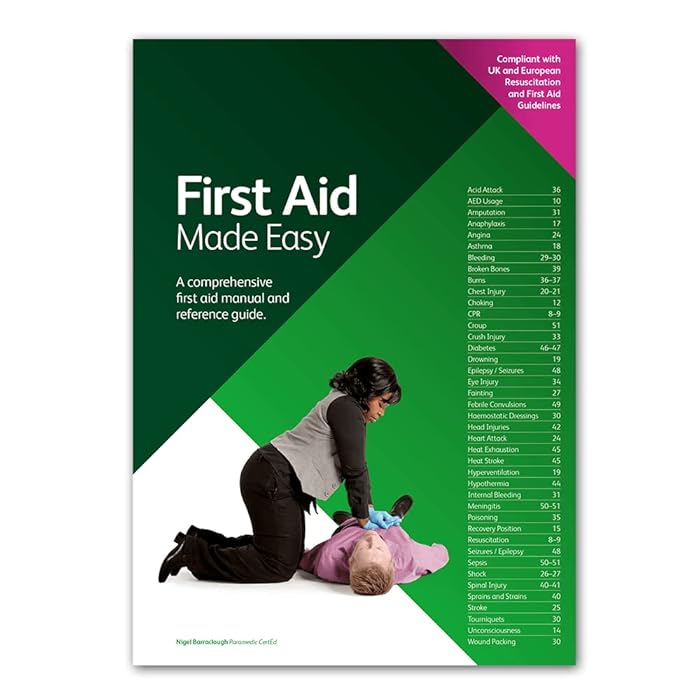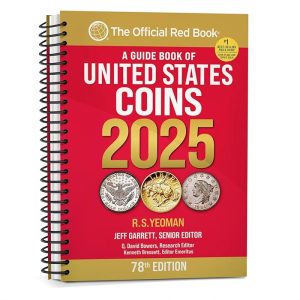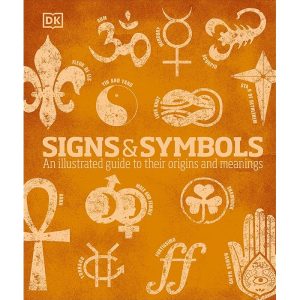Description
“First Aid Made Easy” is a great concept for simplifying essential life-saving techniques and procedures. Here’s a quick guide on key first aid tips that are simple to follow:
### 1. **CPR (Cardiopulmonary Resuscitation)**
– **When to perform:** If someone is unresponsive and not breathing.
– **How to do it:**
1. **Call for help** – Dial emergency services.
2. **Position** the person on their back on a firm surface.
3. **Chest Compressions**: Place hands in the center of the chest and push hard and fast (about 100-120 compressions per minute).
4. **Rescue Breaths (optional)**: If trained, give 2 rescue breaths after every 30 compressions.
### 2. **Choking (Heimlich Maneuver)**
– **When to perform:** If someone is unable to breathe or talk due to choking.
– **How to do it:**
1. **For adults:** Stand behind the person and place your hands just above their navel.
2. **Perform abdominal thrusts**: Give quick, inward and upward thrusts until the object is expelled.
3. **For infants:** Use back slaps and chest thrusts (gentler).
### 3. **Bleeding**
– **When to perform:** If someone is bleeding heavily from a wound.
– **How to do it:**
1. **Apply pressure** directly to the wound with a clean cloth or bandage.
2. **Elevate** the injured limb (if possible) to reduce blood flow.
3. **Call for help** – If bleeding is severe or doesn’t stop, seek medical help immediately.
### 4. **Burns**
– **When to perform:** For burns caused by heat, chemicals, or electricity.
– **How to do it:**
1. **Cool the burn** with cool (not cold) running water for at least 10 minutes.
2. **Cover the burn** with a clean, non-stick bandage or cloth.
3. **Do not pop blisters** or apply ice.
### 5. **Sprains and Strains**
– **When to perform:** For a twisted or overstretched joint.
– **How to do it:**
1. **Rest** the injured part and avoid putting weight on it.
2. **Ice** the area to reduce swelling (apply for 20 minutes at a time).
3. **Compression** with an elastic bandage to reduce swelling.
4. **Elevation** to reduce swelling.
### 6. **Severe Allergic Reaction (Anaphylaxis)**
– **When to perform:** If someone has difficulty breathing, swelling, or hives after exposure to an allergen.
– **How to do it:**
1. **Call for help** and use an epinephrine auto-injector (if available).
2. **Keep the person calm** and lying down with their legs raised if possible.
3. **Monitor for symptoms** and be ready to administer CPR if necessary.
### 7. **Seizures**
– **When to perform:** If someone has a seizure.
– **How to do it:**
1. **Protect the person** from injury by moving sharp objects away.
2. **Place something soft** (like a jacket or cushion) under their head.
3. **Do not restrain their movements** or put anything in their mouth.
4. **Call for help** and time the duration of the seizure.
### 8. **Heart Attack**
– **When to perform:** If someone shows signs of a heart attack (chest pain, shortness of breath, sweating).
– **How to do it:**
1. **Call emergency services immediately.**
2. **Encourage the person to chew an aspirin** (if no allergies and they are conscious).
3. **Monitor for changes** in their condition and be prepared to perform CPR if needed.
### 9. **Heat Stroke**
– **When to perform:** If someone is overheated, with symptoms like confusion, hot, dry skin, and rapid pulse.
– **How to do it:**
1. **Move to a cooler place.**
2. **Cool the person down** with cold compresses or a cool bath.
3. **Offer fluids** (water or an electrolyte drink), but avoid giving them anything cold.
### 10. **Fractures**
– **When to perform:** If someone has a broken bone.
– **How to do it:**
1. **Immobilize the limb** with a splint or any sturdy material to prevent movement.
2. **Apply ice** to reduce swelling.
3. **Seek immediate medical help**.
### Remember:
– Always **call for professional help** if you are unsure about a situation.
– Keep a basic first aid kit accessible.
– Regularly refresh your knowledge of first aid techniques.





Reviews
There are no reviews yet.